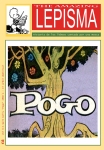
A Clients Guide, wishful thinking? Perhaps. But, perhaps a consideration.
The digital world has vastly improved the speed of design. Proofs can be sent electronically and a great amount of design can be accomplished on computer in a much shorter amount of time than ever before.
However, technology has not made the design process simpler. Designers still need time to work with your company to decide the best way to represent it to the consumer.
Deadlines and project scope must be realistic and flexible enough to deal with the unexpected. Remember that you are buying a public face to your business, and value it accordingly.
Remember that your designer is a professional collaborator and not an employee, and brings a set of skills to your company that is geared towards expanding your business.
When you hire a designer, make sure that you make them part of your business day. Keep in touch at a frequency acceptable to both of you, and the design process will flow smoothly in both directions.
Designers, like all business contacts, appreciate returned messages, even if it is only an acknowledgment of receipt.
Spend an extra hour with your designer at the beginning to outline your needs and interests, and you will save hours of time down the road in regards to deadlines and project scope. Taking the time to deliver a sufficiently in-depth project brief ultimately serves as a cost-saving device for both parties.
A qualified designer is trained to analyze your professional needs and, with your input and guidance, craft visual expressions of your business. The client should understand that this skill goes beyond the personal aesthetic and often deals with the psychology of branding and public perception, and is as individual to your company as a fingerprint.
A designer’s suggestions and recommendations on the project are not simply what clients or designers find appealing or pleasing. Good quality design is engineered to appeal to your customer. Be fair in your criticism. Ask questions instead of making statements. If something does not work, explain your misgivings fully instead of simply.
Remember that your designer is a professional collaborator and not an employee, and brings a set of skills to your company that is geared towards expanding your business.
In addition, the concepts and ideas generated together represent a contractual agreement of confidentiality/exclusivity between the designer and client. Just as the Designer will not divulge your business operations, you and your staff are obligated to do the same for our business.
This is an excerpt from Business Of Design Online featuring Catherine Morley's A Client’s Guide to Professional Conduct in the Design Industry.
To me it all boils down to one thing: Respect.
Great read, pass it on.
That's Right,
HMK
This is a That's Right repost from March of 2008, thanks to el estratografico for the cool scan.

















































